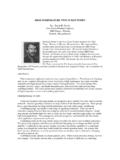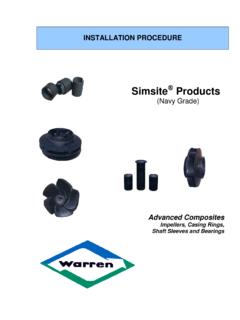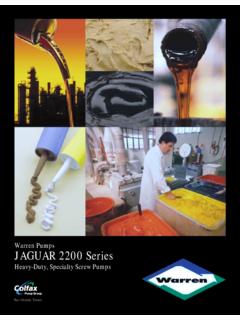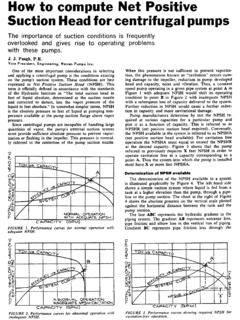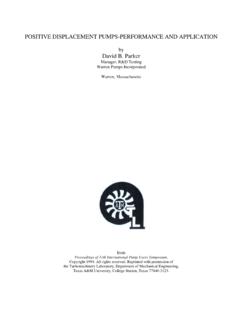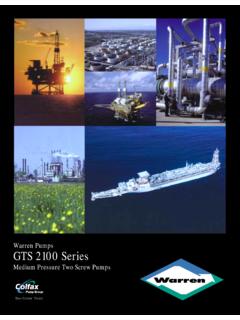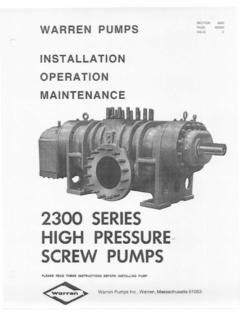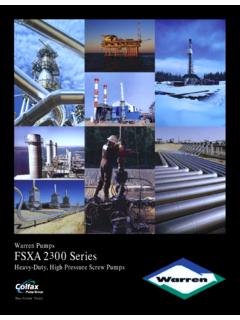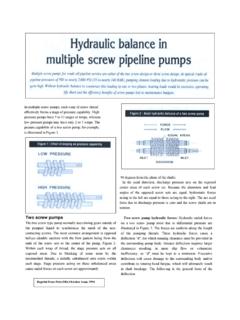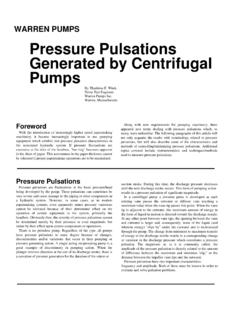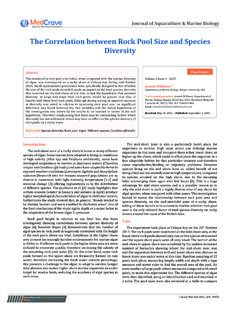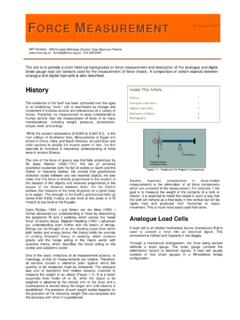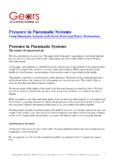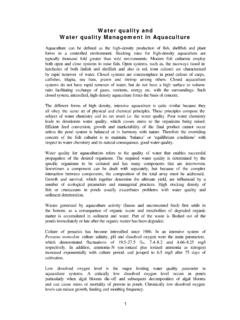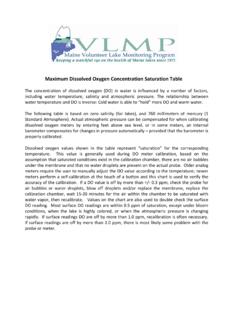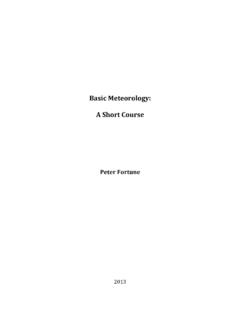Transcription of How to compute Net Positive Suction Head for centrifugal …
1 How to compute Net PositiveSuction Head for centrifugalpumpsThe importance of Suction conditions is frequentlyoverlooked and gives rise to operating problemswith these J. Paugh, President, Engineering, Warren pumps of the most important considerations in selecting and applying acentrifugal pump is the conditions existing on the pump's Suction conditions are best expressed as Net Positive Suction Head(NPSH). This term is officially defined in accordance with the standardsof the Hydraulic Institute as "The total Suction head in feet of liquidabsolute, determined at the Suction nozzle and corrected to datum, lessthe vapor pressure of the liquid in feet absolute.
2 " In somewhat simplerterms, NPSH is the absolute pressure in feet of liquid at pumpingtemperature available at the pump Suction flange above vapor centrifugal pumps are incapable of handling large quantities ofvapor, the pump's external Suction system must provide sufficientabsolute pressure to prevent vaporization or flashing in the impeller. Thispressure is normally referred to the centerline of the pump this pressure is not sufficient to prevent vaporization, thephenomenon known as "cavitation" occurs causing damage to theimpeller, reduction in pump developed head and capacity, noise andvibration.
3 Thus, a constant speed pump operating in a given pipe systemat point A in Figure 1 with adequate NPSH would shift its operatingcondition to point B in Figure 2 with inadequate NPSH with a subsequentloss of capacity delivered to the system. Further reduction in NPSH would cause a further reduction in capacity and more manufacturers determine by test the NPSH required at variouscapacities for a particular pump and plot it as a function of capacity. Thisis referred to as NPSIIR (net Positive Suction head required). Conversely,the NPSH available in the system is referred to as NPSHA (net positivesuction head available). For cavitation free operation the NPSHA mustequal or exceed the NPSHR at the desired capacity.
4 Figure 3 shows thatthe pump referred to previously requires X feet NPSH in order to operatecavitation free at a capacity corresponding to a point A. Thus the systeminto which the pump is installed must have X or more feet NPSHA. Determination of NPSH available The determination of the NPSH available in a system is illustrated graphically by Figure 4. The left hand side shows a simple Suction system where liquid is fed from a tank at a higher elevation than the pump, through a pipeline to the pump Suction . The chart at the right of Figure 4 shows the absolute pressure on the vertical scale plotted against the horizontal distance between the tank and the pump Suction .
5 The line ABC represents the hydraulic gradient in the piping system. The gradient AB represents entrance loss, pipe friction and elbow loss in the vertical run of piping. Gradient BC represents pipe friction loss throughthe horizontal run of piping. Together they represent the loss in the totalavailable Suction head from the tank to the pump distance DE represents the vapor pressure of the liquid, thus theNPSHA is represented by the distance the chart the basic equation for net Positive Suction head available is: NPSHA = +/-Hs hL - HA - HvWhere, Hs = Static Suction head (+) or lift (-)HL= Suction line losses (friction, entrance and fittings) in feetHA = Absolute pressure at the liquids free surface in feet of liquid = Vapor pressure of liquid at pumping temperature converted to feet of liquid that the above definition of NPSHA does not include velocity headat the pump Suction flange.
6 Since this term is by definition included in NPSHRas shown on pump selection curves, it can be ignored in computing example problems are shown in Figures 5 through in the last example the total Suction lift is the static lift (15 ft.) plus thedynamic lift 2 ft. (pipe friction) or 17 ft. Many pumps intended for coldwater service contain Suction lift lines instead of an NPSHR on the pumpselection curve. For cold water conditions a convenient relationship betweensuction lift and NPSHA can be established as follows:By using the above relationship it is possible to convert required NPSHto Suction lift capability and vice versa, so long as standard conditions(cold water at sea level) considerations For cold water conditions at elevations other than sea level acorrection for lower barometric pressure must be made.
7 Theatmospheric pressure reduces approximately foot of water per 1000ft. increase in elevation thus at an elevation of 1000 ft. the aboverelationship becomes NPSHA = S + and at 2000 ft. NPSHA S + , etc. As indicated previously, a centrifugal pump will always operate atthe intersection of its head-capacity curve with the system curve(Figure 1). If insufficient NPSH is supplied to the pump Suction thisintersectionwill occur at a lower head and capacity as the pump curve "breaks-off"and noise and cavitation begins (Figure 2). The NPSHR curve shown in Figure 3 is usually obtained by testingthe pump on cold water by throttling the Suction line to producedynamic Suction lifts at the pump Suction corresponding to the desiredvalue of NPSH.
8 By measuring the capacity at which the pump "breaks-off" the curvefor NPSHR versus capacity is developed. For condensate service involving low available NPSH, the test isconducted on a hotwell under vacuum corresponding to the saturationtemperature of the liquid. The NPSHR is determined in a mannersimilar to the example shown in Figure 9 Normally pumps are not recommended for Suction lifts of more than20 ft. due to the difficulty in maintaining prime even though theNPSHR would indicate the pump could handle greater than 20 ft. pumps , on the other hand, are offered for NPSH as low as12 inches. In this case the source of Suction must always be above thepump Suction , so that if the pump should momentarily loose prime and"break-off", it can regain its prime by virtue of gravity flow.
9 In conclusion, many centrifugal pump operating difficulties arisefrom misunderstood or unfavorable Suction conditions. It must berealized that Suction conditions and NPSHA are every bit as important,if not more so, than the pump's capacity and total head. More attentionto Suction conditions and NPSHA will result in more trouble-free pumpoperation.
